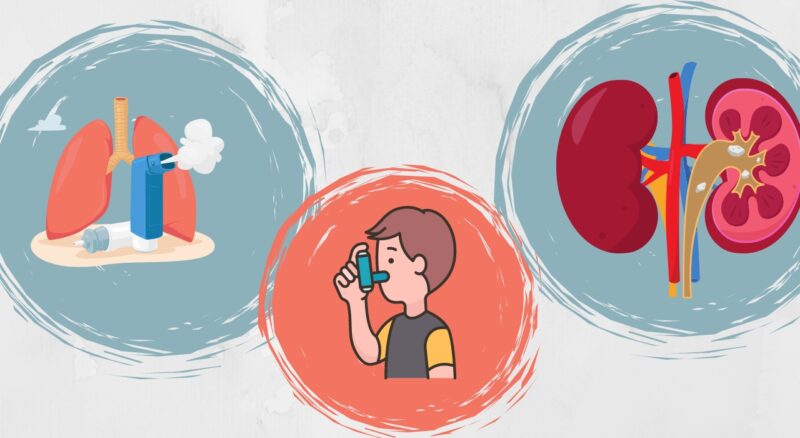Hello, readers! Today, I’m going to take you on a journey through the fascinating world of bicarbonate (HCO3-), a vital component in our body’s acid-base balance.
Have you ever wondered how our body maintains the perfect pH levels? Well, bicarbonate plays a starring role in this process, and it’s something we can measure in both serum BMP and blood gases/ABG tests.
Bicarbonate in Serum Basic Metabolic Panel

The Basic Metabolic Panel (BMP) is something that might sound complex, but it’s simply a blood test that assesses your basic metabolic status. It’s like a health check-up for your body’s engine!
Now, let’s talk about bicarbonate’s inclusion in the BMP panel. It’s not just there for fun; it has a significant role in understanding the body’s acid-base balance.
Here’s a handy table to help you understand the normal ranges and what they mean:
| Bicarbonate Level (mEq/L) | Clinical Interpretation |
| 22-28 | Normal Range |
| Below 22 | Potential Metabolic Acidosis |
| Above 28 | Potential Metabolic Alkalosis |
Various factors can cause bicarbonate level variations in the BMP, such as dehydration, kidney diseases, or certain medications. It’s like a puzzle, and every piece matters!
Bicarbonate in Blood Gases/Arterial Blood Gas Analysis
Arterial Blood Gas (ABG) analysis might sound intimidating, but it’s a crucial test to assess your respiratory and metabolic status. Think of it as a deep dive into how your lungs and kidneys are performing.
In ABG analysis, bicarbonate is measured to determine acid-base imbalances. It’s like a detective looking for clues to solve a medical mystery. Understanding these levels in ABG results can be complex, but it’s vital in diagnosing conditions like respiratory or metabolic acidosis and alkalosis.
The relationship between bicarbonate, pH, and carbon dioxide (CO2) levels in ABG is a delicate dance that keeps our body in balance. If one partner stumbles, the whole dance can be thrown off!
Acid-base imbalances and Bicarbonate
Diving deeper into the world of acid-base balance, we encounter two main imbalances: acidosis and alkalosis. Imagine your body’s pH as a seesaw.
- On one side, we have acidosis, where the body has too much acid.
- On the other side, we have alkalosis, where the body is too alkaline.
Bicarbonate acts as the balancing force in the middle, ensuring the seesaw doesn’t tip too far in either direction.
Here’s where it gets a tad more intricate:
- Respiratory Acidosis and Alkalosis: This is where our lungs come into play. If CO2 (carbon dioxide) isn’t effectively removed from our body, it can lead to respiratory acidosis. On the flip side, if we’re getting rid of too much CO2, it can result in respiratory alkalosis. And guess what? Bicarbonate steps in to compensate for these changes in CO2 levels.
- Metabolic Acidosis and Alkalosis: This is the kidney’s domain. Bicarbonate plays a pivotal role in buffering excess acids or bases in our system. For instance, if our body produces or ingests too much acid, levels might decrease, leading to metabolic acidosis. Conversely, if there’s a bicarbonate surplus, we might be looking at metabolic alkalosis.
There are several medical conditions that can influence our acid-base balance. For instance, chronic obstructive pulmonary disease (COPD) can lead to respiratory acidosis, while prolonged vomiting might result in metabolic alkalosis.
| Condition | Potential Impact on Bicarbonate |
| Chronic Kidney Disease | Decreased Bicarbonate |
| COPD | Increased Bicarbonate |
| Prolonged Vomiting | Increased Bicarbonate |
Factors Affecting Bicarbonate Levels

You are what you eat, as they say! The foods we consume can influence our bicarbonate concentration. For instance, a diet rich in citrus fruits and vegetables can increase levels, acting as a natural buffer.
Our lungs play a crucial role in maintaining bicarbonate levels. Conditions like asthma or chronic bronchitis can impact how effectively our lungs remove CO2, thus affecting levels.
Our kidneys are the unsung heroes when it comes to regulating bicarbonate. If they’re not functioning optimally, due to conditions like renal tubular acidosis, it can lead to imbalances in levels.
Certain medications can be party crashers, altering our bicarbonate levels. For instance, diuretics might increase levels, while painkillers like aspirin can decrease them.
| Medication | Potential Impact on Bicarbonate |
| Diuretics | Increased Bicarbonate |
| Aspirin | Decreased Bicarbonate |
| Antacids | Increased Bicarbonate |
Monitoring Bicarbonate Levels

For patients with certain medical conditions, like kidney disease or respiratory disorders, keeping a close eye on bicarbonate levels is paramount. It’s akin to checking the oil levels in your car; you want to ensure everything runs smoothly!
Healthcare professionals rely heavily on BMP and ABG results to make informed treatment decisions. These tests provide a snapshot of a patient’s acid-base balance, guiding interventions when necessary.
Untreated acid-base imbalances related to bicarbonate levels can lead to complications ranging from muscle twitching and hand tremors to more severe issues like arrhythmias or even coma.
FAQ
What Is the Significance of Bicarbonate in The Body’s Acid-Base Balance?
Like the body’s natural balancing act. It helps neutralize excess acids, ensuring that our body’s pH stays within the normal range. Without it, we’d be prone to dangerous fluctuations that could affect our overall health.
How Is Bicarbonate Measured in Serum Bmp and Abg Tests?
In serum BMP, it is measured as part of a standard blood test, while in ABG, it’s assessed directly from an arterial blood sample. These tests provide insights into our body’s acid-base balance, helping healthcare professionals make informed decisions.
What Medical Conditions Can Affect Bicarbonate Levels?
Various conditions, such as kidney disease, respiratory disorders, and certain medications, can influence levels. It’s a complex interplay that requires careful monitoring.
How Do Healthcare Professionals Treat Abnormal Bicarbonate Levels?
Treatment depends on the underlying cause. It might include dietary changes, medications, or even specific medical interventions. It’s all about getting to the root of the problem!
Can Lifestyle and Dietary Changes Impact Bicarbonate Levels?
Absolutely! Healthy eating and lifestyle choices can positively influence levels. For example, a diet rich in fruits and vegetables can help maintain optimal levels.
Are There Any Risks Associated with Having Too Much or Too Little Bicarbonate?
Yes, imbalances in levels can lead to conditions like metabolic acidosis or alkalosis, which can have serious health implications if left untreated.
Can Medications Influence Bicarbonate Levels, and If So, Which Ones?
Certainly! Medications like diuretics, aspirin, and antacids can alter levels. Always consult with healthcare professionals to understand these interactions.
Conclusion
And there we have it, dear readers! We’ve journeyed through the intricate world of bicarbonate, exploring its vital role in maintaining our body’s acid-base balance. From its presence in serum BMP and ABG tests to its significance in various medical conditions, bicarbonate is indeed a crucial player in our overall health.
Remember, knowledge is power, and understanding our body’s inner workings, including the role of bicarbonate, empowers us to make informed health decisions. Stay curious, stay healthy, and until next time, happy reading!
